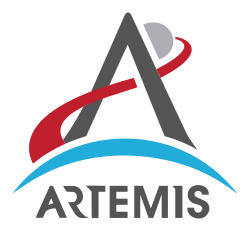
The Artemis program is a human spaceflight program by the United States. The Artemis program is intended to reestablish a human presence on the Moon for the first time since Apollo 17 in 1972; mid-term objectives include establishing an international expedition team, and a sustainable human presence on the Moon. Long-term objectives for Artemis are laying the foundations for the extraction of lunar resources, and eventually making crewed missions to Mars and beyond feasible.
Contents
- Main missions
- Support missions
- Technology demonstrations
- Surface missions
- Logistics missions
- See also
- Notes
- References
- External links
To date, missions in the program are aimed at exploration of the Moon, including crewed and robotic exploration of the lunar surface. These explorations will be more focused towards areas such as the lunar poles and the far side of the moon. Three flights of the Orion Multi-Purpose Crew Vehicle are currently planned for launch in the Artemis program in the early 2020s, beginning with Artemis 1. Before Artemis was named, the flights were referred to as "Orion missions". Numerous supporting scientific and technology demonstration missions are planned for launch under the program's Commercial Lunar Payload Services (CLPS), in addition to planned and proposed uncrewed logistical missions to construct and resupply the Gateway and its expendable and reusable lunar landers in lunar orbit.[ citation needed ]





